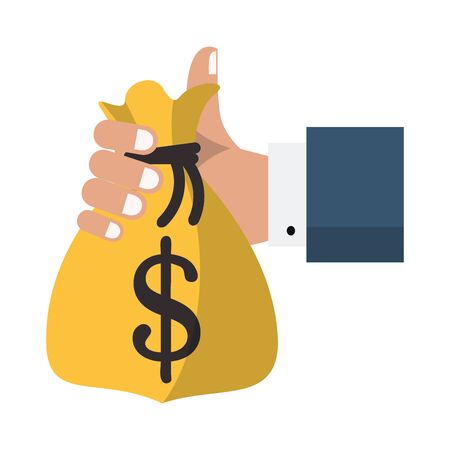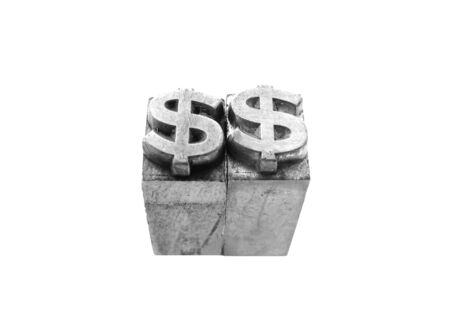1. Not Having an Emergency Fund at All
Many people neglect to build an emergency fund, leaving them vulnerable to unexpected expenses. Without a financial cushion, even minor setbacks—like a car repair or medical bill—can lead to debt or financial stress. An emergency fund acts as a safety net, helping you stay financially stable when life throws surprises your way.
Why You Need an Emergency Fund
Having an emergency fund is essential for financial security. Here’s why:
- Avoiding Debt: Without savings, people often rely on credit cards or loans during emergencies, leading to high-interest debt.
- Reducing Stress: Knowing you have funds set aside can give you peace of mind and reduce financial anxiety.
- Coping with Job Loss: If you lose your job, an emergency fund can help cover essential expenses while you look for new employment.
- Handling Unexpected Expenses: Car repairs, medical bills, or home maintenance costs won’t derail your budget if you have savings.
How Much Should You Save?
The amount you need in an emergency fund depends on your lifestyle and financial situation. A general guideline is to save three to six months’ worth of living expenses. Use the table below to estimate how much you should aim for:
| Monthly Expenses | Minimum Savings Goal (3 Months) | Ideal Savings Goal (6 Months) |
|---|---|---|
| $2,000 | $6,000 | $12,000 |
| $3,500 | $10,500 | $21,000 |
| $5,000 | $15,000 | $30,000 |
How to Start Saving for an Emergency Fund
(1) Set a Realistic Goal
You don’t need to save everything at once. Start with a small goal—such as $500 or $1,000—and gradually increase it over time.
(2) Automate Your Savings
Set up automatic transfers from your checking account to a dedicated savings account. This makes saving effortless and ensures consistency.
(3) Cut Unnecessary Expenses
Review your budget and find areas where you can cut back—such as dining out or subscription services—and redirect that money into your emergency fund.
(4) Use Windfalls Wisely
If you receive a tax refund, work bonus, or other unexpected money, consider putting a portion of it toward your emergency savings instead of spending it all.
2. Keeping Too Little or Too Much in Your Fund
Finding the right balance for your emergency fund is crucial. Saving too little can leave you vulnerable to unexpected expenses, while saving too much might prevent you from making the most of investment opportunities. Let’s explore how to determine the ideal amount for your needs.
(1) Why Saving Too Little Is Risky
Having an insufficient emergency fund means you may struggle to cover sudden financial setbacks like medical bills, car repairs, or job loss. Without enough savings, you might have to rely on credit cards or loans, leading to high-interest debt that can be difficult to repay.
(2) Why Saving Too Much Can Be a Problem
While having a large emergency fund may feel reassuring, keeping too much cash in a low-yield account can limit your ability to grow your wealth. Excess money sitting in a savings account could be better utilized in investments that offer higher returns over time.
(3) How Much Should You Save?
The right amount for an emergency fund varies based on personal circumstances, but a general guideline is:
| Situation | Recommended Savings |
|---|---|
| Single with stable income | 3 months of living expenses |
| Married with dual incomes | 3-6 months of living expenses |
| Sole provider or irregular income | 6-12 months of living expenses |
| Nearing retirement | 12+ months of living expenses |
(4) Tips for Finding the Right Balance
- Avoid under-saving: Ensure you have at least three months of essential expenses covered.
- Avoid over-saving: Once you hit your target, consider putting extra funds into investments like stocks or retirement accounts.
- Reevaluate periodically: Life changes, such as a new job or family expansion, may require adjustments to your emergency fund.
- Diversify where you keep it: Keep enough cash easily accessible but consider storing some in high-yield savings accounts for better growth.
The key is finding a balance that keeps you financially secure without missing out on potential investment growth. By evaluating your situation and adjusting accordingly, you can ensure your emergency fund works effectively for your needs.

3. Mixing Emergency Funds with Other Savings
Blending your emergency savings with general funds can lead to spending it on non-emergencies. If your emergency fund is sitting in the same account as your vacation savings or new gadget fund, it becomes too easy to dip into it for non-urgent expenses. Keeping these funds separate ensures that you have money available when a real emergency strikes.
Why Keeping Funds Separate Matters
When your emergency fund is mixed with other savings, it’s harder to track how much you truly have set aside for unexpected situations. You might think you have enough saved for emergencies, only to realize later that youve spent a portion on discretionary purchases.
(1) Risk of Overspending
If your emergency fund is combined with everyday savings, you might unknowingly use it for things like dining out, entertainment, or shopping. Without clear separation, its easy to justify dipping into it for non-essential reasons.
(2) Lack of Clarity
When all your savings are in one place, it’s difficult to determine how much is strictly reserved for emergencies. This can create confusion and lead to underestimating what’s actually available when an urgent need arises.
How to Keep Your Emergency Fund Separate
To prevent mixing funds and ensure your emergency savings remain untouched until needed, consider these strategies:
(1) Open a Dedicated Account
A high-yield savings account or money market account specifically for emergencies keeps your funds accessible yet separate from daily spending.
(2) Automate Transfers
Set up automatic transfers from your main account into your emergency fund each month. This removes the temptation to spend the money elsewhere.
(3) Name Your Account
If your bank allows it, label the account as “Emergency Fund.” A clear name serves as a reminder not to use the money for anything else.
(4) Use a Different Bank
If you struggle with self-control, keeping your emergency fund in a separate bank from your regular checking account can make accessing the money less convenient for impulse spending.
Comparison: Mixed vs. Separate Emergency Funds
| Aspect | Mixed Savings Account | Dedicated Emergency Fund |
|---|---|---|
| Accessibility | Easily accessible but prone to misuse | Accessible when needed but less tempting for daily use |
| Financial Clarity | Difficult to track true emergency savings | Clear understanding of available emergency funds |
| Risk of Spending | High – may be used for non-emergencies | Low – reserved strictly for emergencies |
| Savings Discipline | Lacks structure and discipline | Encourages responsible saving habits |
4. Storing Your Emergency Fund in the Wrong Place
Keeping your emergency fund in an account that’s hard to access or prone to market fluctuations can be risky. Choosing the right place to store your money ensures you can access it quickly when needed without losing value due to market downturns or withdrawal restrictions.
Where Should You Store Your Emergency Fund?
The best place for your emergency fund should provide quick access, safety, and some level of interest growth. Here are common options and their pros and cons:
| Option | Pros | Cons |
|---|---|---|
| High-Yield Savings Account | – Easy to access – Earns interest – FDIC insured |
– Interest rates may fluctuate – Limited withdrawals per month |
| Money Market Account | – Higher interest than traditional savings – Check-writing abilities – FDIC insured |
– May have minimum balance requirements – Limited transactions per month |
| Certificate of Deposit (CD) | – Higher interest rates – Low risk |
– Money is locked for a set term – Early withdrawal penalties |
| Investment Accounts (Stocks, Mutual Funds, etc.) | – Potential for high returns over time | – Risk of losing value during market downturns – Not easily accessible in emergencies |
Avoid These Common Storage Mistakes
Avoiding these mistakes will help ensure your emergency fund is there when you need it:
(1) Keeping It in Cash Only
Cashing out your entire emergency fund and storing it at home might seem like a safe option, but it exposes you to risks like theft, loss, or inflation reducing its value over time.
(2) Investing It in Risky Assets
Your emergency fund should not be invested in stocks, mutual funds, or other volatile assets. Market fluctuations could mean your funds lose value right when you need them most.
(3) Locking It Away in Long-Term Accounts
Avoid putting your emergency fund into CDs with long terms or retirement accounts like IRAs where early withdrawals may come with penalties.
The Best Strategy for Storing Your Emergency Fund
A good approach is to keep most of your emergency fund in a high-yield savings account or money market account for easy access while earning some interest. If you have a large fund, you can consider placing a portion in short-term CDs for slightly higher returns while ensuring liquidity.
5. Failing to Replenish After Use
Using your emergency fund when unexpected expenses arise is exactly what it’s there for. However, one of the biggest mistakes people make is not rebuilding their savings after they dip into it. Without replenishing your fund, you leave yourself financially vulnerable when the next emergency strikes.
Why Replenishing Your Emergency Fund Is Essential
Your emergency fund acts as a financial safety net, providing peace of mind and security. If you fail to restore it, you may be forced to rely on credit cards or loans in future emergencies, leading to unnecessary debt and financial stress.
Steps to Rebuild Your Emergency Savings
(1) Assess How Much You Need to Restore
Calculate how much of your emergency savings you’ve used and determine your target amount to replenish. Ideally, aim to rebuild your fund back to at least three to six months’ worth of expenses.
(2) Adjust Your Budget
Review your budget and identify areas where you can temporarily cut back. Redirect those savings toward replenishing your emergency fund as quickly as possible.
(3) Set Up Automatic Transfers
Automating your savings makes it easier to rebuild your emergency fund without having to think about it. Set up a recurring transfer from your checking account into your savings account each month.
(4) Use Windfalls Wisely
If you receive a tax refund, work bonus, or any unexpected income, consider using part of it to speed up the replenishment process.
(5) Find Additional Income Sources
Picking up freelance work, selling unused items, or taking on a side gig can help accelerate the rebuilding of your emergency fund.
Quick Comparison: Smart vs. Risky Replenishment Strategies
| Smart Strategies | Risky Approaches |
|---|---|
| Setting a clear savings goal | Avoiding replenishment altogether |
| Cutting non-essential expenses | Taking out loans instead of saving |
| Automating monthly contributions | Relying solely on windfalls |
| Pursuing extra income opportunities | Dipping into other long-term savings (e.g., retirement funds) |
The key takeaway is that using your emergency fund should always be followed by a plan to rebuild it. By prioritizing replenishment and making consistent efforts, you ensure that youre prepared for whatever financial challenges may come your way.


